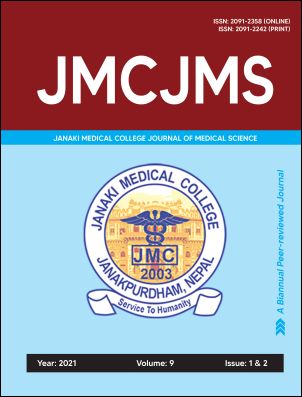Access to health services and health inequalities in remote and rural areas
DOI:
https://doi.org/10.3126/jmcjms.v10i2.47868Keywords:
Access, Healthcare, Healthcare System, Healthcare Inequalities, SDGsAbstract
ABSTRACT
Access to health care includes the availability, accessibility, awareness, accommodation or adequacy, affordability, and acceptability of health services. Scarce health facilities, long distances to health facilities, shortages of medicine, level of poverty, shortages of doctors, dentists, and other health professionals, level of education and knowledge among populace on orthodox treatment practices are factors that affects access to health care. Level of awareness among the populace of preventive and curative services offered by health facilities, absence of health insurance, and inability to afford the cost of health services are obstacles limiting rural people from recognizing and achieving the health and social related Sustainable Development Goals (SDGs), that requires that access to good quality healthcare is improved significantly in rural areas and under-served population.
Health inequalities exist both between and within developed and developing countries, both between and within urban, semi-urban and rural areas. Health inequalities are determined by various socioeconomic factors: such as age, sex, race, ethnicity, education, income, social status, unemployment and place of residence of the population. The factors that give rise to, and worsen, inequalities in health are multidimensional. Interventions in addressing health inequalities would involve economic policies, strategic health planning, health education on avoidable risk factors for poor health, use of telemedicine/tele dentistry, and reduction of unmet healthcare needs among various population groups. Other interventions are poverty eradication interventions especially in remote and rural areas, healthcare financing through budgetary allocation, and improving access to health service through universal health coverage, with an organized and efficient health system.
Downloads
Downloads
Published
How to Cite
Issue
Section
License
© JMCJMS, JMC, Janakpur, Nepal




